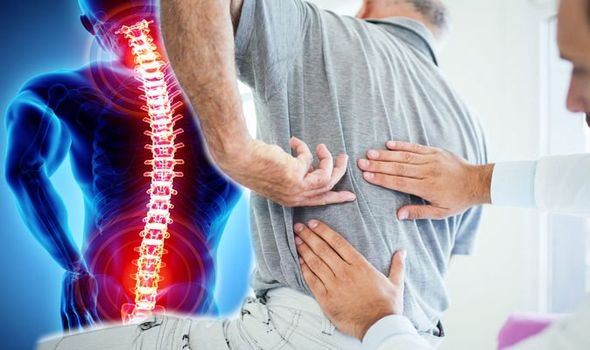COMMON SPINE DISORDERS AND HOW THEY ARE TREATED. Our spines are responsible for providing our bodies structure and support. They’re also designed to protect our spinal cord, which is made up of a group of nerves that connect our brains with the rest of our body.
Without our spines, it’ll be impossible for us to move and our organs won’t be able to function. That’s why, it’s important to take care of our spines by practising good posture, exercising and stretching regularly, as well as eating a well-balanced diet.
However, even if you’re doing everything to maintain a healthy spine, several factors can put you at risk of developing conditions that affect the spine. Let’s have a look at five common spine disorders so that you can be knowledgeable of their causes and treatments:
Scoliosis
Scoliosis is a spinal disorder characterised by an abnormal sideways curvature of the spine. The exact cause of scoliosis is often unknown, but healthcare professionals have linked congenital disabilities, neuromuscular conditions, and even hereditary factors with some cases.
While mild cases may not exhibit noticeable symptoms, more severe scoliosis can lead to uneven shoulders or hips, a prominent shoulder blade, or the appearance of leaning to one side. In some cases when the curvature affects the chest cavity, scoliosis may cause back pain or respiratory issues.
Treatment for scoliosis depends on the severity of the curvature and the individual's age. Mild cases may only require monitoring, while more pronounced curvature may necessitate bracing to prevent further progression. In severe cases, surgery may be recommended to straighten and stabilise the spine.
Arthritis
Arthritis is a condition that causes inflammation of one or more joints, resulting in pain and stiffness. Two of the most common types of arthritis that occur in the spine are osteoarthritis and rheumatoid arthritis. Osteoarthritis is primarily caused by the wear and tear of the joints over time. Rheumatoid arthritis, on the other hand, is an autoimmune and inflammatory disease where the body's immune system mistakenly attacks the joints.
Management of spinal arthritis focuses on alleviating symptoms and improving joint function. This may involve medications for pain relief and inflammation reduction. Physical therapy can also be recommended to enhance flexibility and strength. In some cases, however, surgical interventions are needed to address severe joint damage.
Spinal Tumours
Spinal tumours are abnormal growths of cells or tissues within the spinal canal or bones of the spine. These tumours can be either benign (non-cancerous) or malignant (cancerous), and their presence can lead to various neurological symptoms and challenges.
The causes of spinal tumours can be diverse, including genetic factors, exposure to certain chemicals, or conditions like neurofibromatosis. While some spinal tumours develop without a known cause, others may result from the spread of cancer from other parts of the body. Individuals with spinal tumour typically experience back pain, weakness, numbness, and difficulty with coordination or walking.
Treating spinal tumours involves a multidisciplinary approach. Benign tumours may be monitored and require no immediate intervention. When dealing with malignant tumours, however, a neurosurgeon may recommend surgery, radiation, and/or chemotherapy to remove or shrink the tumour while preserving spinal function.
Spinal Stenosis
Spinal stenosis is a condition characterised by the narrowing of the spinal canal. This narrowing can occur in various regions of the spine, leading to a range of symptoms such as pain, numbness, and weakness in the affected areas. In more severe cases, individuals may also experience difficulty walking or maintaining balance, and the symptoms can worsen over time.
When treating spinal stenosis, the aim is to relieve its symptoms and improve the individual's quality of life. For mild spinal stenosis, non-surgical approaches like medications, physical therapy, and lifestyle modifications are viable. In cases where these measures are ineffective, surgical procedures like decompression surgery or spinal fusion may be considered.
Herniated Disc
A herniated disc, also known as a slipped or ruptured disc, occurs when the soft inner material of a spinal disc pushes through the tough outer layer. This condition can result in pain and discomfort, affecting the nerves surrounding the disc. The primary cause of a herniated disc is the natural ageing process, leading to wear and tear on the spinal discs.
Outside of this, traumatic injury, improper lifting techniques, or excessive strain on the spine can also contribute to the development of herniated discs. Rest, physical therapy, and pain medications are often used to treat a herniated disc. However, if the symptoms persist or worsen over time, more advanced treatments like epidural steroid injections or surgical procedures may be considered to alleviate pressure on the affected nerve.
As the saying goes, forewarned is forearmed. Considering the critical role of the spine in the body, it’s important to know about these common disorders. The information in this article may also prompt you to consult with a medical professional if you’re experiencing any of the symptoms of these disorders.
P/S : Lately ni ramai orang kena slip disc, kenapa ekkkk?










Thank you for coming by.
Comments are your responsibility.
Any comments are subjected to the Act 588 MCMC 1988.
Comment wisely, and do it with pure intentions.
Happy Blogging.